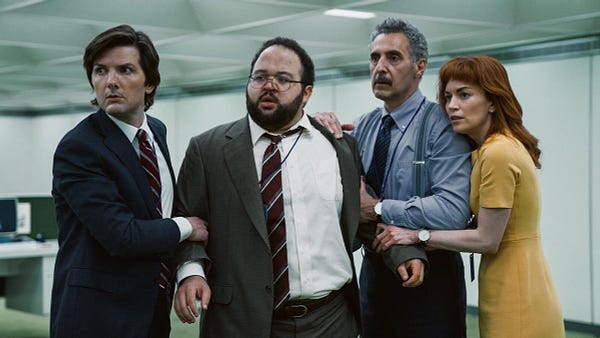Blood in the S&P Streets, Streaming Wars Irrationality, and the Greater Fool
When I wrote that Winter is Coming back in January, I had no idea that it would get this cold this fast.
The S&P 500, a loser five weeks in a row, took a big step towards making that six with a 3.2% drop on Monday. In fact, the benchmark index finished the day under 4,000 for the first time in over a year.
Here’s how the three major market indices have fared so far in 2022:
Dow Jones — Down 11.9%
S&P 500 — Down 16.8%
Nasdaq — Down 26.6%
💀💀💀
PANIC! BUY!
While I truly feel for those who need to take money out of this market in the short-term (at big losses) for either retirement expenses or other unexpected needs, this is really my kind of market.
Big drops in the S&P 500 or Nasdaq basically mean that a bunch of the best companies in the world are on sale. And, during downturns like this one, these sales are pretty much the equivalent of Black Friday.
Just last week, I wrote about how Paramount Global looked like a steal at $30. And, now, it’s trading in the $27-28 range. There hasn’t been any news/updates that caused this drop — just pure market panic. If you liked PARA at $30 (and I did), then you should LOVE it at $27.44.
Paramount is not alone. There are similar cases strewn throughout the market, particularly among formerly high-flying “growth” companies.
Take Big Tech, for instance. The Nasdaq has turned into a bloodbath as sky-high valuations get cut down to size by rising interest rates and inflation. Lost in all that, though, is that impeccable companies like Apple, Alphabet, Amazon, Microsoft, etc. are falling right into the value sweet-spot.
No one knows how far the market will drop or how long this carnage will last. Trying to time the market is a fool’s errand. But, for the patient and long-term investor focused on value above all else, opportunities like this don’t come around very often.
Streaming Wars Irrationality
Meanwhile, Mr. Market has lost his mind in the Streaming Wars.
In addition to some legit headwinds from the broader market sell-off, the entire streaming sector is still in shambles after Netflix’s disastrous earnings report. The fall from grace of the premiere streaming service derailed all of its rivals — with the fallout touching Paramount Global, Disney, and Warner Bros. Discovery.
Wall Street seemingly prefers to bury its head in the sand (and tank the entire sector) rather than honestly face up to its erroneous assumptions on Netflix. Maybe, just maybe, Netflix shouldn’t have traded at 50-100x earnings after reaching large-cap status.
And, while content costs are important, Wall Street seemingly lurched from not caring about them at all to thinking that they will be the death of the entire streaming industry.
Again, rather than simply acknowledging that Netflix’s lack of legacy content will lead to higher content costs, Wall Street assigns the problem to everyone involved in the streaming game. Despite all of the others possessing deep libraries of content.
Irrationality cannot last forever, but it’s been doing a number on the streamers for the past few weeks.
On the bright side, it does make for some pretty enticing buying opportunities…
Don’t Be The Greater Fool
Some words of wisdom from Gary Mishuris, managing partner of Silver Ring Value Partners, in his Q1 2022 letter:
The real distinction isn’t between “Growth Investing” and “Value Investing”. The difference is between “Intrinsic Value Investing” and “Greater Fool Investing”.
There are “value investors” playing the greater-fool game: “If this company earns N in this quarter/year, the market will value it at Y x N and I will get out, regardless of what the business is really worth.”
There are “growth investors” playing the greater-fool game: “If this company raises/beats guidance or forecasts a higher long-term growth rate, the market will extrapolate that and the stock will go up, and I can make money regardless of whether it comes true or not.”
The Greater Fool Investors only care about what someone else will pay for an asset, regardless of its cash flows. The Intrinsic Value Investors care about the long-term cash flow stream and its present value, not how the market will price it at a specific point in time.
I’ve always found that investing according to the greater fool theory (i.e. offloading your stock at a higher price to someone dumber than yourself) is like playing with fire. The greater fool is almost always you, not your intended victim.
If you enjoy my work, please hit the ❤️ below and share this post with anyone who might be interested (or on social media). Thank you!
Disclosure: This is not financial advice. I am not a financial advisor. Do your own research before making any investment decisions.



